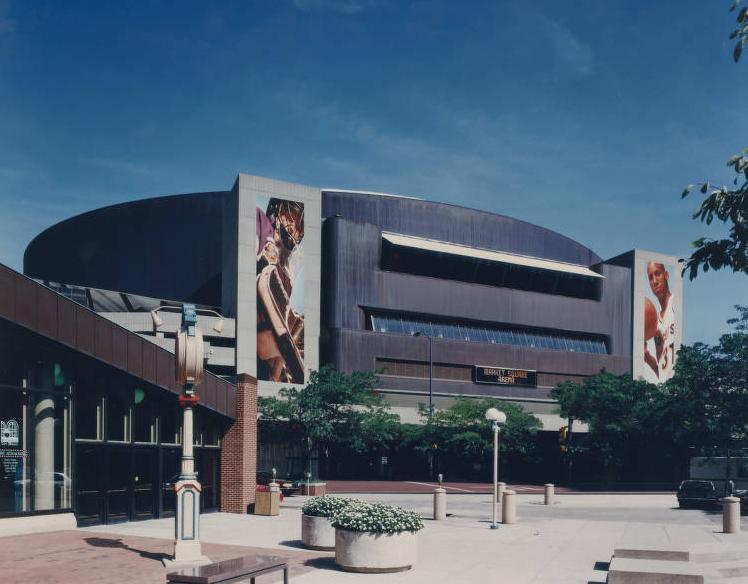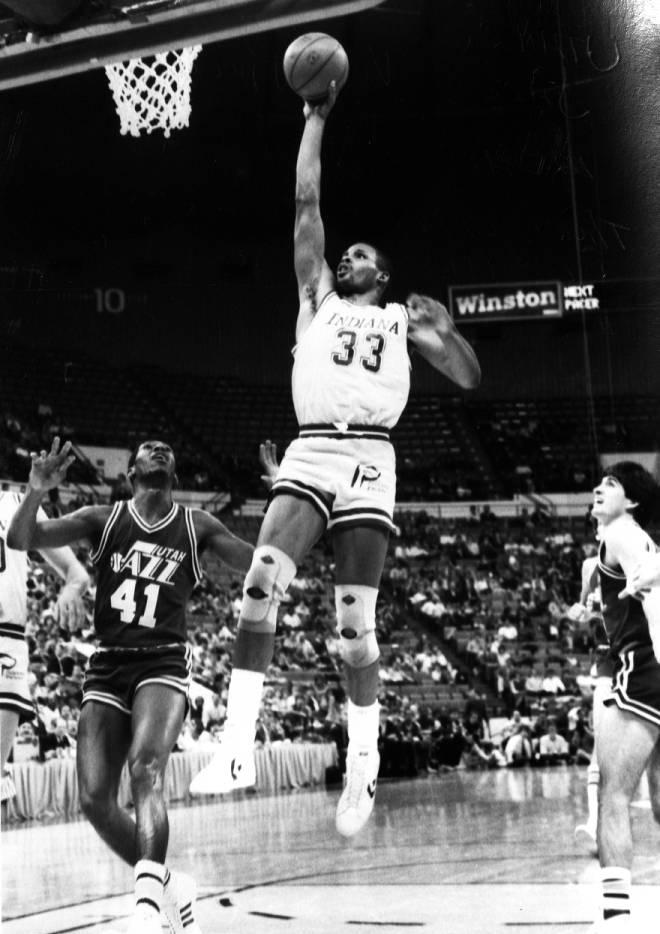When it opened on September 15, 1974, Market Square Arena (MSA), was the fifth-largest sports arena in the United States. The structure’s completion concluded efforts, spurred in part by the search for a new home, to revitalize the downtown area with a sports facility.

In fall 1970, Indianapolis civic and government leaders posed the project to fourth-year design students at the Ball State University College of Architecture and Planning. Students Joseph Mynhier and Terry Pastorino created the design that the City of Indianapolis promoted for the stadium’s construction. Four architecture firms, with two representatives from each, completed Mynhier and Pastorino’s design. Local firm Kennedy, Brown & Trueblood was one of them, and Pastorino joined it to work on the arena. Financed by a combination of public and private funds, construction began in the fall of 1971 and cost $23.5 million ($150 million in 2020). Indianapolis-based general contractor Huber, Hunt, & Nichols managed the construction of the building. It eventually became part of the Market Square Complex, centered around the .
The building was 150 feet from the arena floor to ceiling and had a clear span diameter of 364 feet with what was, in the early 1970s, the largest Swedler dome ever constructed. The once rare convex roof was constructed by the American Bridge Division of the United States Steel Corporation. Support of the dome was designed to provide an unobstructed view from all seats. Festival seating was eventually done away with for the stadium, and its maximum capacity was 18,178. A restaurant, Market Square Gardens, originally planned as a private club, sat atop the seven-story structure.

Over the years, MSA was the site for concerts, circuses, select auto races, and evangelists, as well as Indiana Pacers basketball and Indianapolis Racers hockey games. On June 26, 1977, Elvis Presley played his last concert at Market Square, and on March 19, 1995, famed professional basketball player Michael Jordan came out of retirement playing his first game for the Chicago Bulls against the Pacers at the arena. The Pacers won 103-96 in overtime to a fully packed house. The match proved to be the most-watched NBA game on television in 20 years.
In 1986, the , a municipal corporation that owned the arena, leased the facility and property for 40 years to Melvin and Herbert Simon, owners of the Indiana Pacers, but the building had inherent problems that eventually led them to abandon it. Perched above Market Street, the arena only had one small loading ramp at the back of the building, which made set up for concerts, events, and even regular deliveries difficult. The structure also was extremely steep, and paths through the stands were narrow, making navigation through the arena potentially treacherous for spectators. The arena’s design also made it impossible to add private boxes, which became necessary in the NBA to create new revenue streams.
The Pacers played their last game in the arena on October 23, 1999, moving to its new stadium Conseco Fieldhouse (subsequently renamed [2011] and Gainbridge Fieldhouse [2021]). The Pacers played their first game at Conseco a few weeks later, on November 6, 1999.
Market Square Arena was demolished by implosion on July 8, 2001. The empty site served as a gravel parking lot until developed with the 360 Market Square apartment complex and the in 2018.

Help improve this entry
Contribute information, offer corrections, suggest images.
You can also recommend new entries related to this topic.